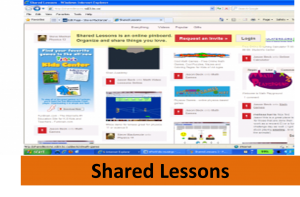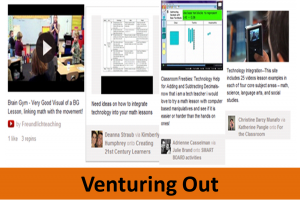When I first created the outline for my ePortfolio metaphor, I thought it might be a little arrogant to call this section Web 3.0. Many sources describe Web 3.0 as an intelligent web, as an environment comprised of intelligent and interdependent nodes working together in a web of co-operation between human and machine (Aghaei, Nematbakhsh and Khosravi, 2012).
However, after one of my colleagues encouraged me to categorize my artifact, Shared Lessons (SL), under Web 3.0, I took another look and found some possible parallels between the two. It’s true that members of interest-based sites provide multiple intelligent nodes that are interconnected and reciprocate messages that function to extend knowledge beyond its previous form. But obviously there is no real co-operation between human and machine in an intelligent fashion. On the other hand, the structure of SL, as far as I have seen, is one of the more intuitive platforms for sharing ideas.
When I entered the program, Pinterest (my model for the PD site) hadn’t been born, its organizational style, aesthetic interface, and interactive affordances weren’t even a twinkle in my eye. Up until then, my experience with resource and community sites consisted of lists of static boring blue links usually requiring endless hours of searching to discover a single relevant or valuable hit. And still today, many other interactive and social networks within resource or PD sites contain lists of forums or chats that are difficult to search and take extensive time to locate answers or resources that match your style or interest.
Today, as I stand on the precipice of the beginning of SL, a project that is the culmination of my MET journey and the answer to my overarching goal, I see this platform extending far beyond my original hopes and dreams. Ultimately, like those that theorize about the future of the Web and what Web 3.0 will be, I too cannot hope to predict all the machinations of Shared Lessons might experience as it morphs and grows to meet the needs of individuals within an interconnected community.
References:
Aghaei, S., Nematbakhsh, M.A., & Khosravi, H. (2012). Evolution of de World Wide Web: from Web 1.0 to Web 4.0. International Journal of Web & Semantic Technology (IJWesT), 3(1), 1-10. Retrieved from http://www.airccse.org/journal/ijwest/papers/3112ijwest01.pdf



 Follow
Follow
Leave a Reply